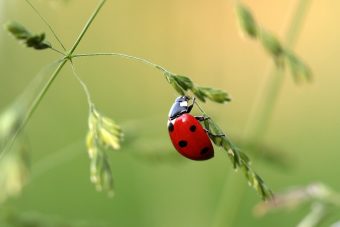If you believe the red-tops, these colourful creatures are heading for our bedrooms. But, can they be all bad? Here’s why we should try and live peacefully with them.

While native ladybirds survive the winter months by hiding in leaf litter outdoors, the harlequin prefers our houses. It is drawn to pale colours – ceilings, for instance – which probably remind it of ancestral rock mountainsides.
As to whether they really carry sexually transmitted infections, “ladybirds have an unfortunate number of STIs”, says Roy, “but they pass them only within themselves”. Scientists get excited about this stuff. Look out for tiny yellow fruiting bodies on a harlequin’s back. “It’s an amazing fungus,” says Roy.
These diseases are not spread to native ladybirds and evidence suggests that native species flee predatory harlequins. The harlequin’s full impact on invertebrate ecosystems is not yet known. In the meantime, the best thing we can do is help scientists log harlequins via the iRecord app or the online ladybird survey and try to live peacefully alongside this vibrant new species.
Source: The Guardian

